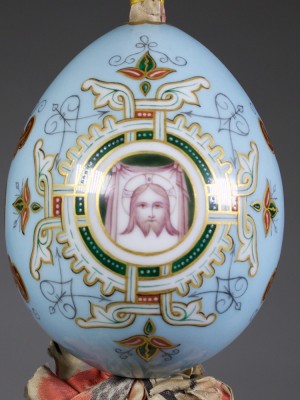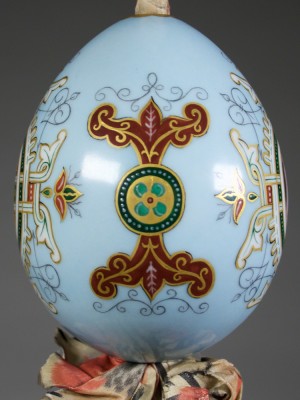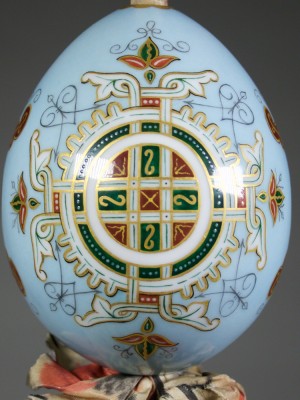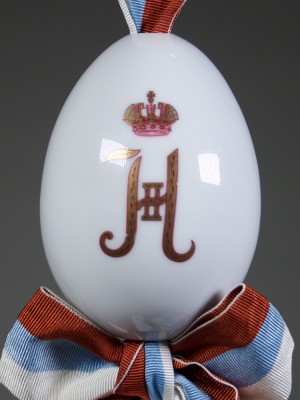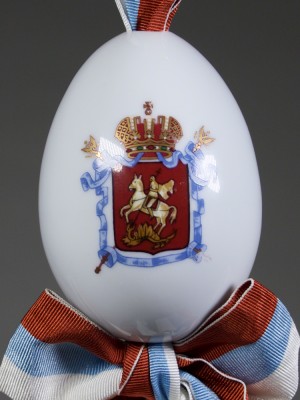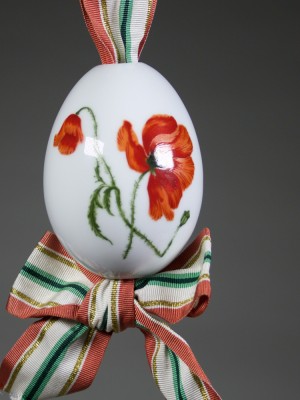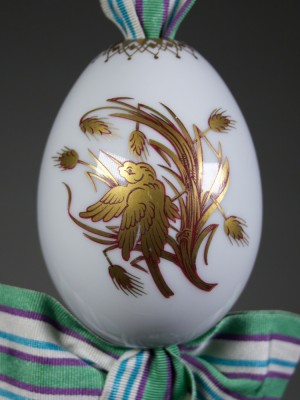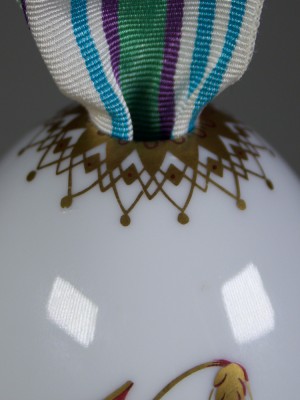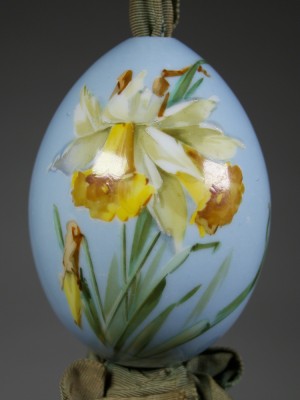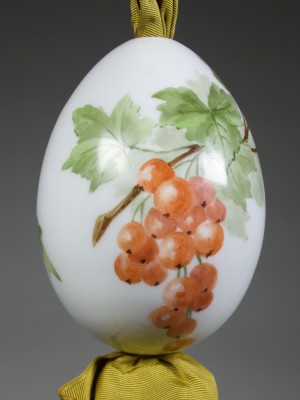These richly enamelled and gilded Easter eggs were made by the Russian Imperial Porcelain Factory in the late 19th and early 20th century.
The Romanov family tradition was to present eggs such as these to guests at the annual Easter feast.
The first is very unusual egg that combines two distinct elements: medieval gothic patterning and a religious icon. The icon in this case is The Vernicle, a cloth believed to have a miraculous image of Christ but different from the shroud of Turin. Makes interesting reading if you are into searching.
Next is an egg with the Moscow coat of arms and the cypher of Nicholas II. While all members of the Imperial family were involved in the distribution of the eggs, only Nicholas II handed out ones with his cypher. So you could say it gives its owner one degree of separation. The original presentation ribbon retains much of its original colour as do the ribbons on the two others that came with it (batch two).
The Poppy egg is stunning when you look at it closely. The shading has been done by painting fine lines of colour close together. The effect is more vibrant than shading by other means. The choice of presentation ribbon is perfection itself. The gold combined with the colour matched stripes gives the whole thing that little extra dazzle.
The Bird in Wheat egg is a very unusual design. I like the way the top band ties in early 20th century design elements.
The Daffodil egg looks soft and delicate with its thinly applied enamels and stippled background. The daffodil is a sign of the garden coming to life and a reinforcing symbol of rebirth in the context of the egg.
The Berry Branch egg shows subtle shading accomplished by the thinnest application of enamel. A very different approach than the Poppy egg.
Eggs with the good kind of cholesterol.
I had thought finding a set of three misidentified IPF eggs was a once in a lifetime thing until I found three more a year later.

